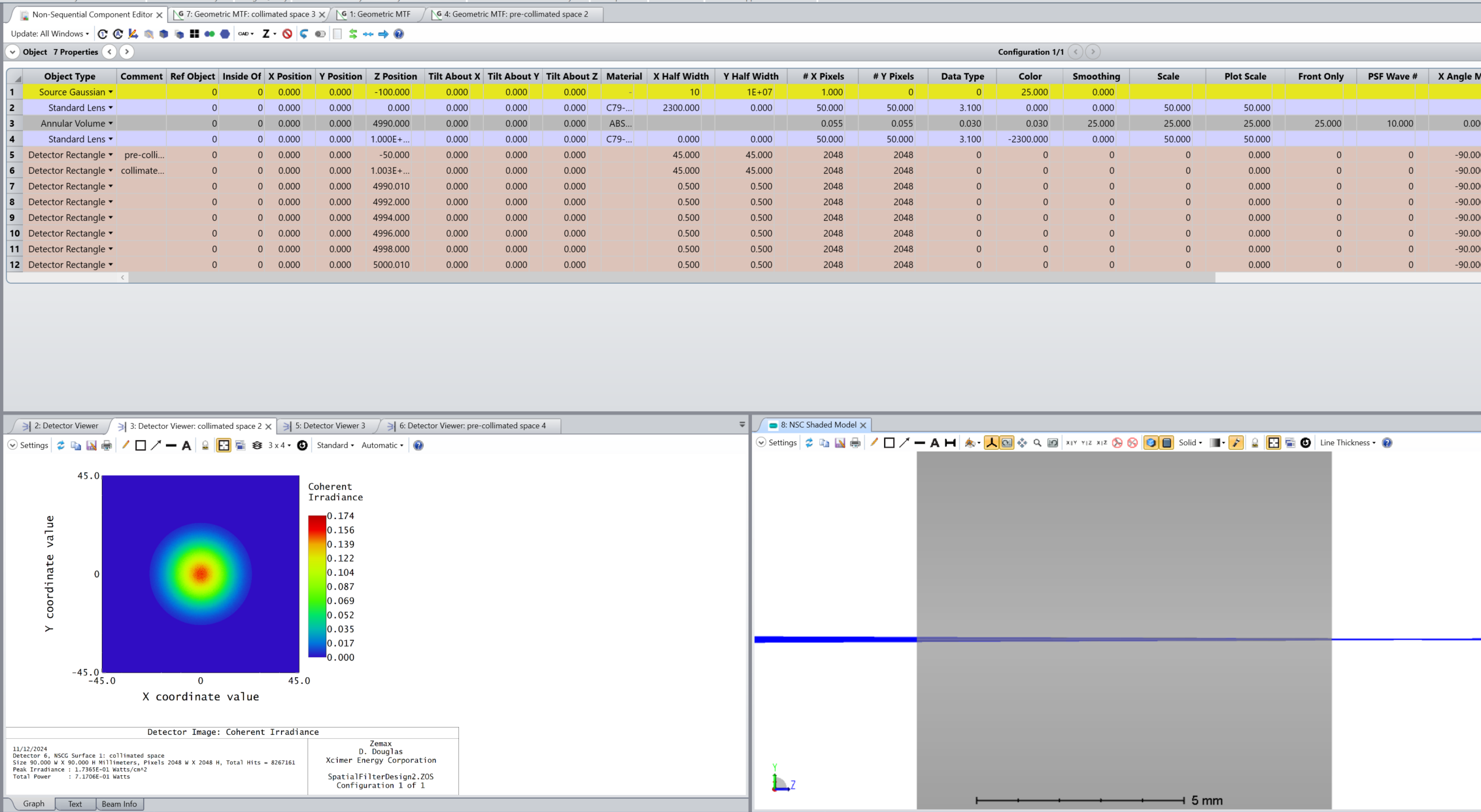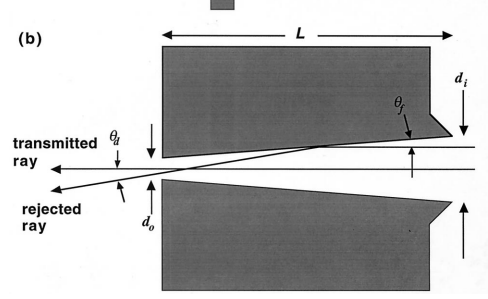I am looking to model a conical spatial filter and I am trying to figure out the best way to do this. I started with a non-sequential model and an absorbing annular volume as the spatial filter. I am specifically trying to look at the spatial frequencies being clipped by the spatial filter, the output beam profile, and how the roughness of the surface of the spatial filter can impact the output beam. I am using the detector viewers to look at the output beam but is there a way to quantify these results. Any assistance would be greatly appreciated.





